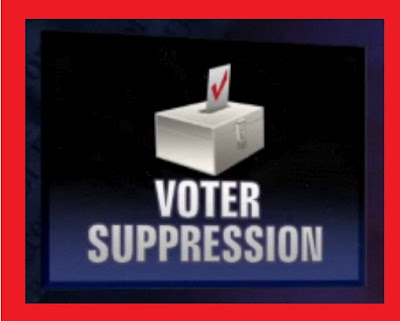There is a case before the Supreme Court right now called Evenwel v. Abbott, and it is the most important voting rights case since the Court’s conservative majority gutted the Voting Rights Act (VRA) in 2013.
The case deals with redistricting — how you draw the lines to determine who votes in what congressional district. What the conservatives want to do is gerrymandering — the manipulation the boundaries of an electoral constituency so as to favor one the GOP.
Right now, districts are drawn based on the number of people in each district — each district needs to have the same number of people. But if conservatives get their way, legislative lines will be drawn based on eligible or registered voters instead of total population, thus not counting children, immigrants (documented and undocumented), prisoners, and other nonvoters. If that happened, districts would become older, whiter, more rural and more conservative, with 55 percent of Latinos, 45 percent of Asian Americans and 30 percent of African Americans excluded from political representation. The same communities most harmed by the gutting of the VRA would see their political influence further diminished.
The arguments for and against this were heard yesterday in the Court. The court appeared divided on how to proceed. Chief Justice John Roberts, who authored the opinion dismantling a key part of the VRA, expressed sympathy with the plaintiff’s argument. “Well, it is called the one person, one vote,” Roberts said. “That seems to be designed to protect voters.”
On the other hand, Justice Sonia Sotomayor took the position that states have not just a “voting interest” but “also a representation interest.” She elaborated: “A state has to be able to say—I think just as the federal government did—the legislature is protecting not just voters; it’s protecting its citizens—or noncitizens. The people who live there.”
“What we actually want,” Justice Stephen Breyer said, “is the kind of democracy where people, whether they choose to vote or whether they don’t choose to vote, are going to receive a proportionate representation in Congress.”
The Notorious RGB wondered aloud if this means that states were wrong when, prior to 1920, they including women for districting purposes. That, she correctly mused, seemed absurd, and if the framers didn’t want to include women (for districting purposes), they would have said so (or not counted them in the census).
The swing vote on so many of these cases, Justice Anthony Kennedy. He seemed to be searching for a middle ground between the plaintiff’s claim of “voter equality” and the longstanding principle of “population equality.”
Unlike the VRA case in 2013, the civil-rights groups defending “one person, one vote” sounded confident after the oral arguments. Nina Perales of the Mexican-American Legal Defense Fund said she was “very heartened” by the questions the justices asked.
But you can never tell. Keep an eye out for this one.

